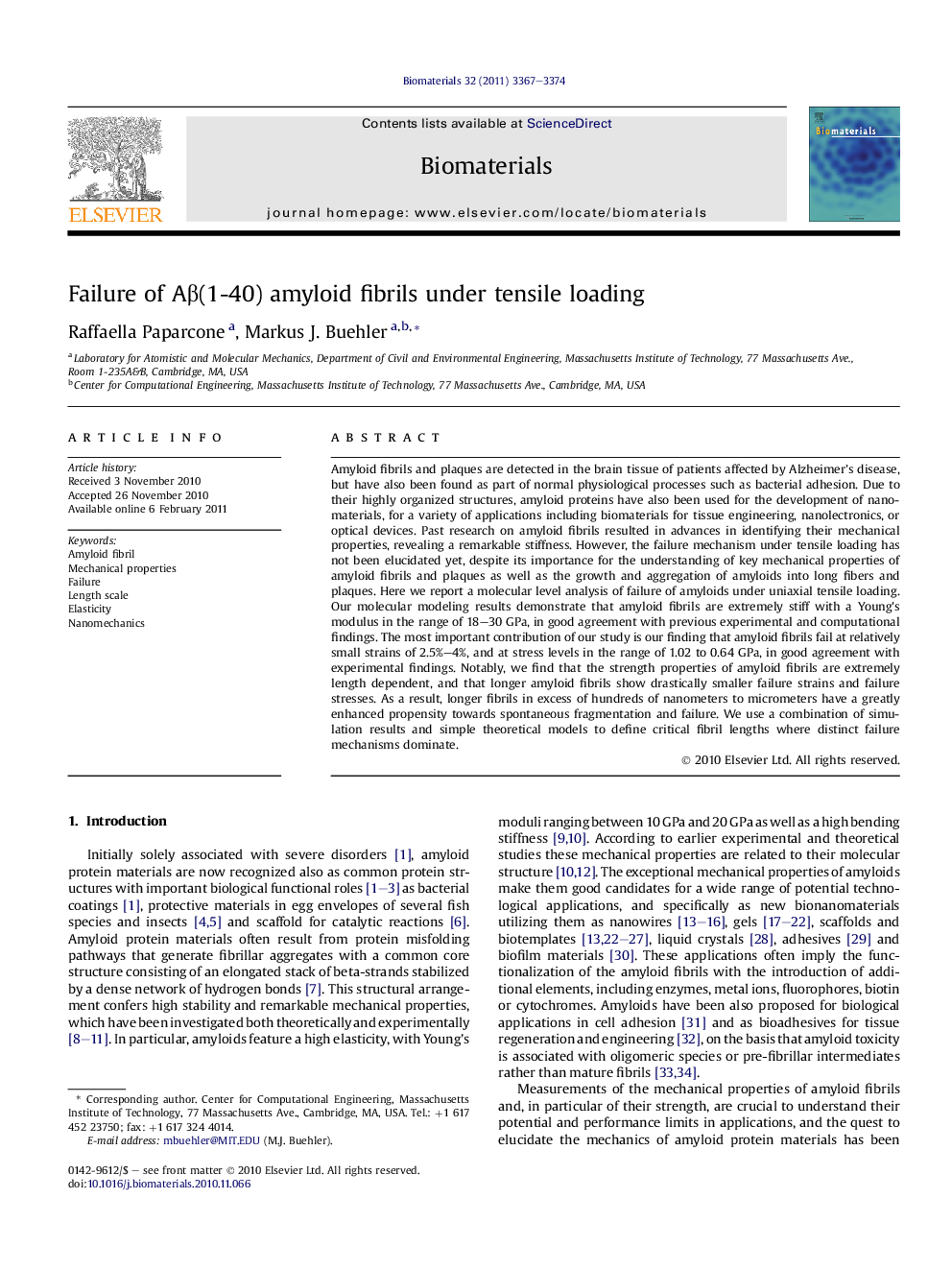| کد مقاله | کد نشریه | سال انتشار | مقاله انگلیسی | نسخه تمام متن |
|---|---|---|---|---|
| 7704 | 561 | 2011 | 8 صفحه PDF | دانلود رایگان |

Amyloid fibrils and plaques are detected in the brain tissue of patients affected by Alzheimer’s disease, but have also been found as part of normal physiological processes such as bacterial adhesion. Due to their highly organized structures, amyloid proteins have also been used for the development of nanomaterials, for a variety of applications including biomaterials for tissue engineering, nanolectronics, or optical devices. Past research on amyloid fibrils resulted in advances in identifying their mechanical properties, revealing a remarkable stiffness. However, the failure mechanism under tensile loading has not been elucidated yet, despite its importance for the understanding of key mechanical properties of amyloid fibrils and plaques as well as the growth and aggregation of amyloids into long fibers and plaques. Here we report a molecular level analysis of failure of amyloids under uniaxial tensile loading. Our molecular modeling results demonstrate that amyloid fibrils are extremely stiff with a Young’s modulus in the range of 18–30 GPa, in good agreement with previous experimental and computational findings. The most important contribution of our study is our finding that amyloid fibrils fail at relatively small strains of 2.5%–4%, and at stress levels in the range of 1.02 to 0.64 GPa, in good agreement with experimental findings. Notably, we find that the strength properties of amyloid fibrils are extremely length dependent, and that longer amyloid fibrils show drastically smaller failure strains and failure stresses. As a result, longer fibrils in excess of hundreds of nanometers to micrometers have a greatly enhanced propensity towards spontaneous fragmentation and failure. We use a combination of simulation results and simple theoretical models to define critical fibril lengths where distinct failure mechanisms dominate.
Journal: Biomaterials - Volume 32, Issue 13, May 2011, Pages 3367–3374